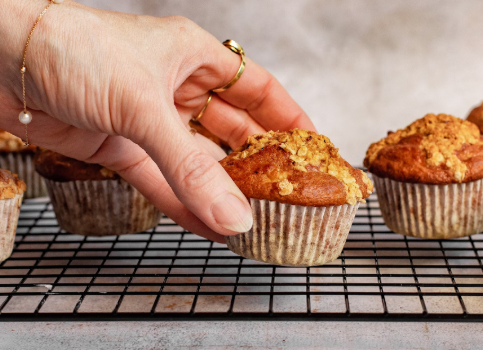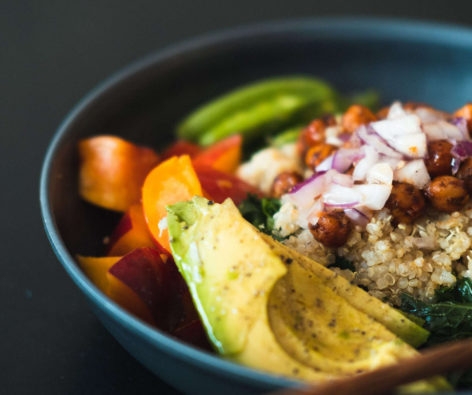
The ketogenic diet, or keto, has become incredibly popular over the last few years, with many turning to it for weight loss and overall health benefits. While the keto lifestyle often focuses on food restrictions, one area that doesn’t have to be sacrificed is dessert. With the right ingredients and techniques, you can indulge in sweet treats while sticking to the keto diet.
For those of you who aren’t experienced bakers, the idea of making keto-friendly desserts might seem daunting. But don’t worry — there are plenty of simple baking tips that will make the process easier. If you’re new to keto baking, here are some practical tips to help you get started.
Understanding the Keto Diet
At its core, the keto diet is designed to cut your body’s intake of glucose (sugar) and replace it with ketones, which come from fat stores. When you lower your carbohydrate intake for a few days, your body shifts into a state known as ketosis. During ketosis, the body starts burning fat for energy instead of carbs.
To stay in ketosis, it’s recommended to limit your carbohydrate intake to around 20 grams of net carbs per day. The rest of your calories should come from protein, healthy fats, and leafy vegetables. The high-fat content in the keto diet helps keep you full, reduces hunger, and even boosts metabolism.
Can Keto Desserts Taste Good?
One common concern when starting the keto diet is whether keto-friendly desserts can compare to traditional treats. While it’s true that achieving the same texture and flavor as regular cakes or cookies can be tricky, it’s entirely possible to create delicious desserts that satisfy your cravings.
For instance, you may find that almond flour or coconut flour behaves differently than regular flour, but with a bit of experimentation, you’ll find the perfect combination. Don’t be afraid to try new ingredients and flavors — it’s all part of the fun!
10 Keto Baking Tips for Beginners
Baking on the keto diet can feel like a challenge at first, especially when it comes to using unconventional ingredients. However, with these 10 keto baking tips, you’ll be able to make sweet, satisfying desserts with ease.
1. Stock Up on Keto Baking Essentials
Start by gathering some key keto baking ingredients. Organize them into three categories: pantry staples, refrigerated items, and add-ins. In the pantry, you’ll want to have almond flour, coconut flour, xanthan gum, baking soda, and sugar alternatives. For refrigerated items, stock up on eggs, butter, dairy, and heavy cream. Finally, don’t forget oils, extracts, and spices — vanilla extract, cinnamon, and nutmeg are all great options.
2. Choose the Right Substitutes for Traditional Ingredients
Traditional baking requires all-purpose flour, but on keto, you’ll need alternatives. Almond flour and coconut flour are popular choices, along with psyllium husk powder, chia flour, and flaxseed meal. Experimenting with these substitutes will help you find the perfect flour combination for your recipes.
3. Use Fresh Ingredients
When baking keto desserts, it’s important to use fresh ingredients, especially dry ones. Coconut flour, for example, can absorb moisture over time, affecting the texture of your baked goods. Always check the freshness and consistency of your ingredients to ensure the best results.
4. Measure Precisely
Keto baking requires precision. Before you begin, measure out all your ingredients to avoid mistakes later. Accurate measurements of both dry and wet ingredients are crucial, as small changes can significantly affect the outcome of your dessert.
5. Consider Pre-Made Keto Mixes
If you’re just starting with keto baking and want some help, consider using pre-made keto baking mixes. These products can save time and ensure consistent results, especially for cakes, muffins, and cookies.
6. Experiment with Different Sweeteners
Finding the right sweetener is essential for keto baking. Popular options include stevia, monk fruit, allulose, and erythritol. Each one has its own flavor profile, so feel free to combine them to create the perfect sweetness for your treats. Just be mindful that stevia can sometimes have a strong aftertaste.
7. Don’t Swap Ingredients
It’s tempting to substitute ingredients in recipes, but when it comes to keto baking, it’s best to follow the instructions exactly. For example, substituting coconut flour for almond flour may require you to adjust the number of eggs or the amount of liquid in the recipe. Until you’re more experienced with keto baking, try to stick to the listed ingredients.
8. Let Ingredients Reach the Right Temperature
Many recipes specify that ingredients should be at room temperature, chilled, or melted for a reason. Some ingredients mix better when they’re at the correct temperature. For instance, cream cheese is easier to blend when it’s softened, and coconut oil may solidify if mixed with cold ingredients.
9. Pay Attention to Oven Temperature
The right oven temperature is crucial in keto baking. Since almond and coconut flours behave differently than wheat flour, they may require adjustments in baking time and temperature. An oven thermometer is a great tool to make sure your oven is accurate and your desserts bake evenly.
10. Let Your Baked Goods Cool Properly
Once your keto dessert is out of the oven, allow it to cool before slicing. Taking a warm cake or bread out of the pan too early can cause it to collapse. Let it sit in the pan for a few minutes and then transfer it to a cooling rack to finish cooling completely.
Enjoying Keto Desserts
The keto diet can seem restrictive at first, but it’s possible to enjoy delicious, satisfying desserts without breaking the rules. By following these tips and experimenting with new ingredients, you’ll quickly get the hang of keto baking. Before long, you’ll be enjoying your favorite treats while staying on track with your diet.










